 David Brackin is the managing director of Stuff U Sell, the leading eBay trading assistant in the UK and a regular Tamebay contributor. In the first of this three part series and the first published rigorous wide scale scientific test of eBay Promoted Listings, David set out the basis for the experiments that Stuff U Sell carried out. Today we will reveal the results of the tests and tomorrow we’ll have the conclusions and actionable insights that you can use in your business.
David Brackin is the managing director of Stuff U Sell, the leading eBay trading assistant in the UK and a regular Tamebay contributor. In the first of this three part series and the first published rigorous wide scale scientific test of eBay Promoted Listings, David set out the basis for the experiments that Stuff U Sell carried out. Today we will reveal the results of the tests and tomorrow we’ll have the conclusions and actionable insights that you can use in your business.
eBay Promoted Listings have a Significant Effect on Sales – Experimental Results
Yesterday I described how we designed a comprehensive trial to test the effectiveness of the eBay Promoted Listings feature, and today I’m sharing the initial results.
The trial started with a 13-week period with no Promoted Listings campaigns to test our baseline sell-through rate and how it varied. This included all our Buy-It-Now/Best Offer listings – just over 15,000 listings each week across a wide range of eBay categories, including fashion, electronics, collectables and vehicle parts & accessories.
The sell-through rate is defined as the number of items where we agreed a sale on eBay, divided by the total number of listings live that week. We then calculated the percentage uplift or downlift each week from the average sell-through rate for the period. There was one clear outlier – the sales in week 10 – the August Bank Holiday weekend – which we discarded when calculating the average sell-through rate and the standard deviations.

The green and red lines represent the upper and lower sell-through rates which can be explained by random variation (for the statistically-minded, they are at two standard deviations). If we get results above the green line, then we can say that we’ve had a statistically significant impact: ie the “treatment” works.
Just to make sure that cancellations and unpaid items didn’t make a difference, we re-ran this analysis to compared orders which were actually dispatched and it did not show any significant difference.
We then compared the weeks where we ran a promoted listing campaign. If we put the promotion on just half of the inventory (evens or odds) then we compared the sell-through rate to the undosed half to remove any time/weather effects. If we dosed the entire inventory then we compared with the control period long-run sell-through rate.
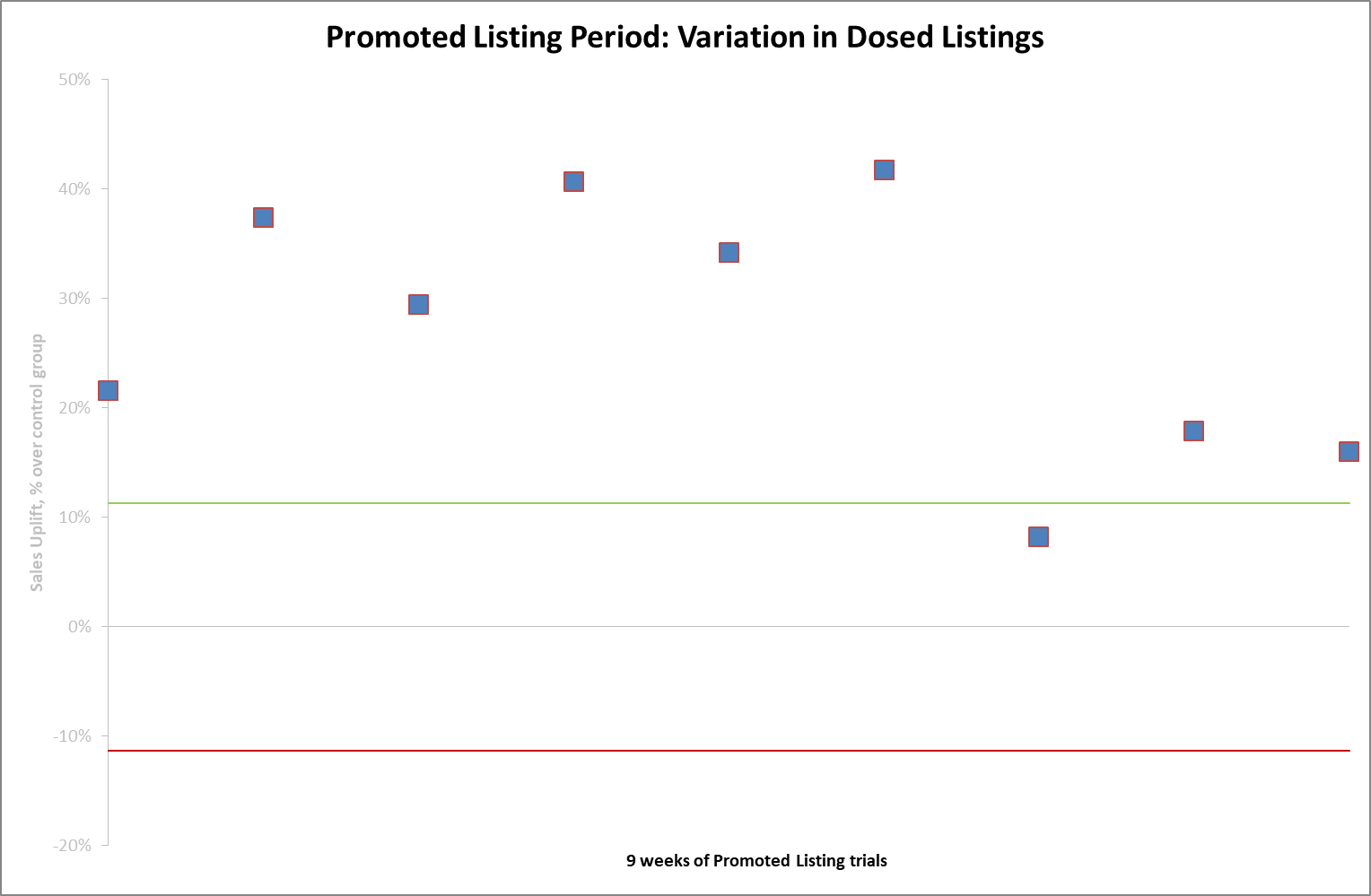
There is a clear and statistically significant increase in sell-through rate when promoting listings in eight out of the nine weeks. The effect is large, increasing the sell-through rate by an average of 27%.
Finally, we looked at how the Promoted Listing percentage affected the sell-through. Would paying more get us an even better result?
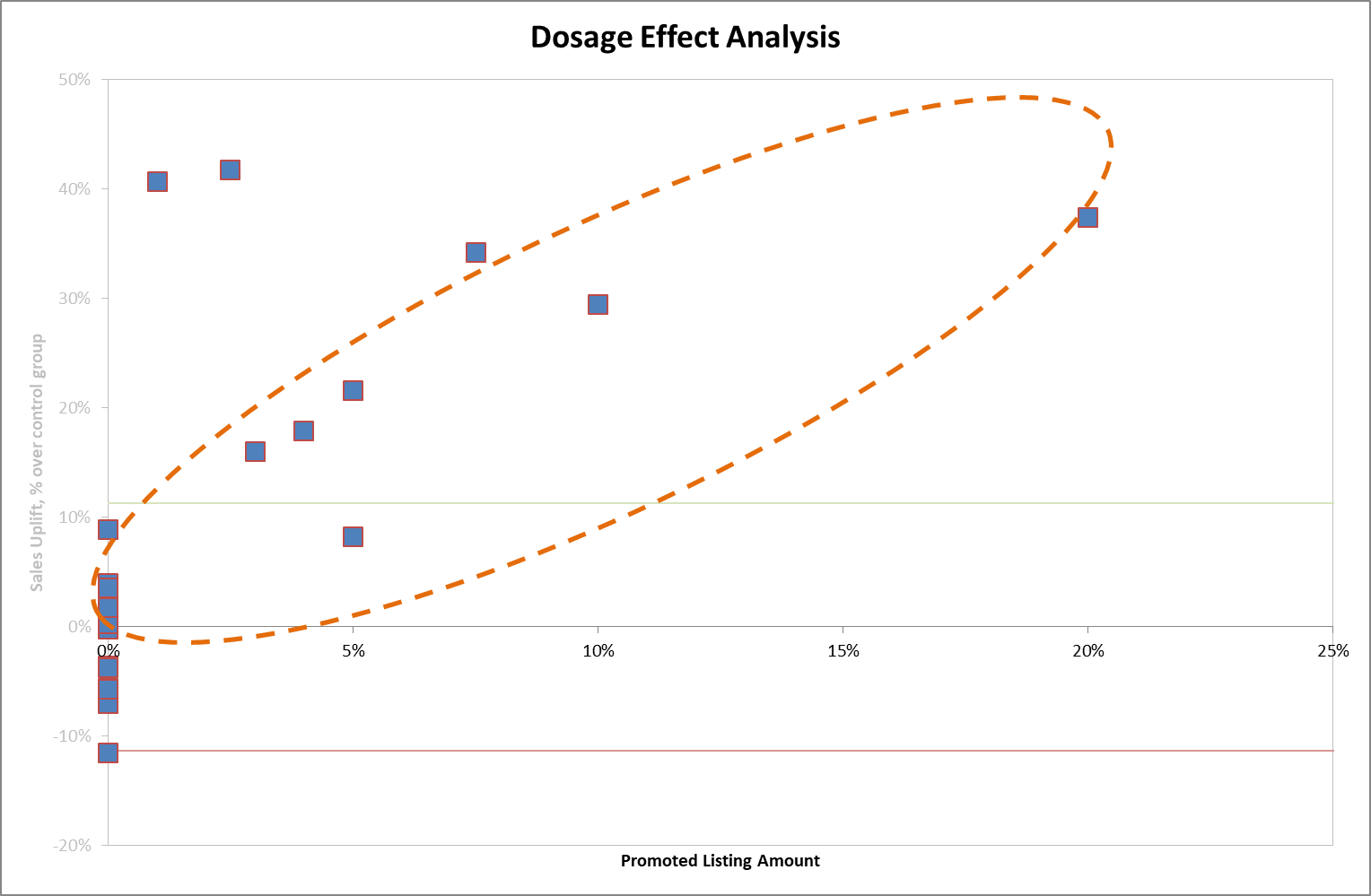
The results broadly suggest that the more you pay the more you get, but the relationship is not as strong as the previous findings. (For the statistically minded, R^2 correlation is 43%). We suspect that this will vary by category – some categories will see much more competition for the top spots and require higher bidding – while other categories are easier so even a low bid will result in an uplift in sales. Stuff U Sell sells across a wide range of categories so our results are spread out.
Tomorrow we look at what these results might mean for your business this year.
Disclosure: As mentioned in the first article, eBay refunded the promoted listings fees to allow this study to be conducted, but had no say in the design or implementation of this research, nor editorial control over this write-up.
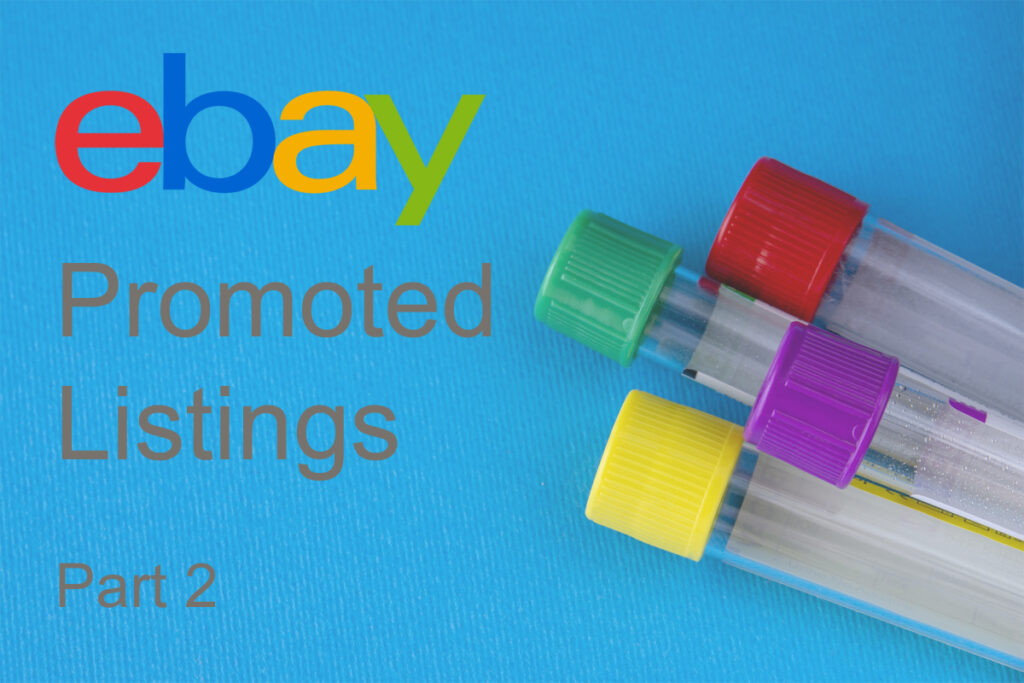
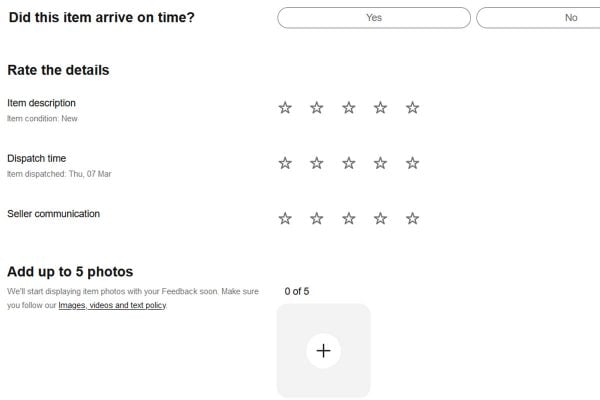

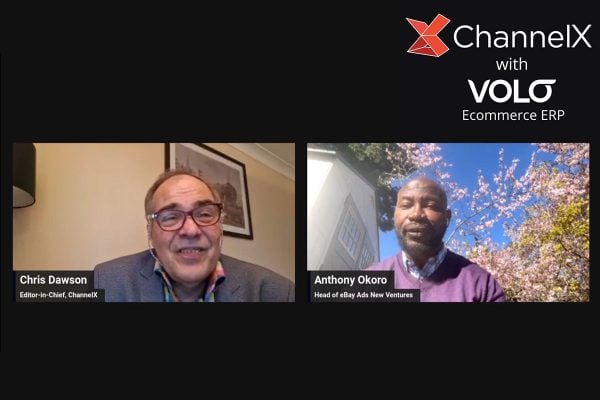
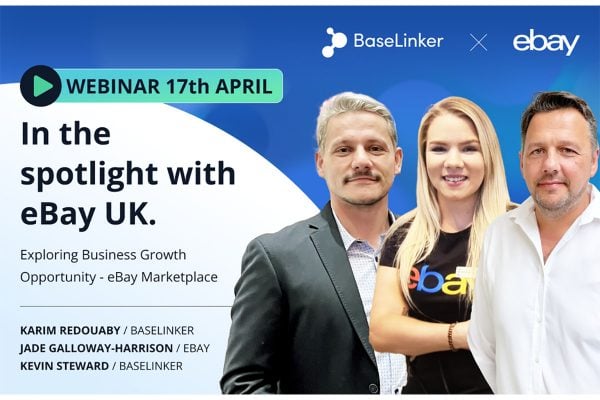

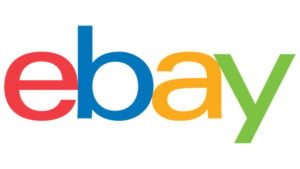


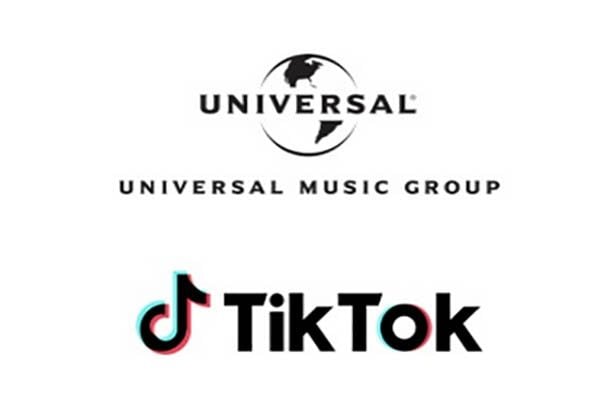

11 Responses
I am not ‘statistically minded’ and looked forward to seeing this article as I would greatly appreciate some advice on Promoted listings particularly the cons. But all this really tells me is that if you use Promoted listings you sell more, forgive me but it does not take someone statically minded or to run an experiment to work that out!
I have found it works for us well, in fact it’s the reason a lot of old listings often get random sales as someone has probably searched for something and the ad has popped up.
The only issue I have with promoted listings is I have often seen our promoted listing side by side in search with our natural listing, which not only feels unfair but feels a bit messy for consumers.
I’m troubled by this.
We have promoted as many as 50,000 listings at a time in collectables over several months.
There has been NO discernible increase in sales. Clicks yes. Sales no.
Morever, this 1st, 4th and 5th thing needs to be shot down. You may get those positions, but it is by no means guaranteed.
I appreciate the disclaimer about Ebay having no involvement here, but the fees were refunded by Ebay, so can this be regarded as completely straight?
I’m not sure this is going to be accepted by the wider business community.
Thank you for your reply David, I am even more confused. Your reply suggests that your trial is a waste of time by your own admission given you will never know how many sales you would have received with or without promoted listings at the given time. I am sure your trial is not a waste of time, I do not seek to inflict any insult, I just want to try and understand in layman terms what your trial indicates.?
My other questions related to promoted listings would be;
If I promoted two listings, listing A was for sale at £24.99 with a 20% promoted fee, and listing B was for sale at £2.99 with a 20% promoted fee would listing B automatically appear before listing A?
Can promoted listings be bad for organic ranking ie, if I promoted a listing many customers clicked on it but did not purchase would this move my organic listing down?
Thanks again for your valued initial reply, hopefully you will have time to respond to the above.
Thank you again for your reply David, it seems because ebay have not published the way in which promoted listings work, at the moment other than if we make our own trials no one knows how it all works. I do not do any in depth analysis of my past promoted listings, but I have found that even if I set the percentage for ebay to take very high on a listing with high for sale price I still see competitors promoted listings before my promoted listings so I haven’t got a clue how it all works.
The Quality of promoted listings is an issue but moreover for myself drop shippers are a nuisance with promoted listings. They simply copy our listing mark the price up to include there profit and pay for the promoted listing and appear before ourselves. This is damaging to the goods we sell as they are not worth the price that they are selling them for and then a customer leaves a bad product rating, linked to our product, whereas the customer probably wouldn’t have done so if they purchased from us at 70% less.
David,
I was at eBay Open last year and had a chance to talk to one of the ebay execs involved with PL. If I understood her correctly, and if this hasn’t changed (PL is ever-evolving), having the highest PL rate is NO guarantee of highest placement. Most sellers assume otherwise, because they assume ebay wants to collect the highest fee possible. But what ebay wants to see from her team is a high rate of conversions. So if the algorithm looks at your listing at 4% and my listing at 10%, and the algo believes your listing has the better chance of selling, you’ll get the better placement. The team is not judged on the dollar volume of fees they produce, they are judged on how successful the algo is in making sales.
The other thing to keep in mind is placement is not confined to certain spots on the search page…..PL listings show up on other pages as well, and they’ve been expanding those spots for a while now. So where your PL item appears on the search page may not be as critical as where it appears elsewhere. I sell mostly one-offs, antiques, used stuff etc, and my guess is most of my items appear on the first search page with or without PL (assuming the buyers is using a narrow enough search). To me (again, I’m guessing, based on my PL sales), I think most of my PL sales are the result of my PL item showing up on another page, not the search page. But as you note, ebay doesn’t provide that kind of granularity in the reports given to us.
And keep in mind that the algo doesn’t just look at the PL listings to decide which one to show where, it also looks at whatever ebay knows about the particular buyer.
And finally, THANK YOU for running this test.
To my experience;
I sold around 200 promoted items in the last 5 months
Ad fees paid: £264.60
Total sales: around £2700
Was it worth it? Well, I know for a fact I would have sold around half of these items without promotion anyway. if I let the campaigns running continuously I am guessing I will end up around £1000 extra clean profit at the end of 12 months.
My early conclusion: Yes I would let the campaigns active since its generating some extra sales however there is no jackpot opportunity here so if you expect little extra profit with no effort, in long run, I think you won’t be disappointed but as I said keep the expectation low.
My campaigns were UK based and I only chose 200 competitive items out of my 3000 product inventory.
Just a couple of nights ago I activated a total of 15000 products on 11 other eBay sites. So for only a few promoted sold but it’s too early to speculate what’s going to happen. Soon as I get some useful data I will share it here.
Bare in the mind since not everyone sells the same product I doubt my findings would be a healthy statistic to expect similar results for other sellers.
Thank you for this useful data David – it’s only by using an analytical and scientific approach that we can start to see the best way to use PL.
We have found with our clients that PL also usually takes into account the sales history and metrics of sellers, so overall we advise using PL strategically and with listings that already have good sales. There is some anecdotal evidence to suggest that PL increase traffic to shops generally, but it’s not possible to be sure about this.
Billy I would be very interested in seeing the results of your research as well – pretty sure they will vary from category to category.